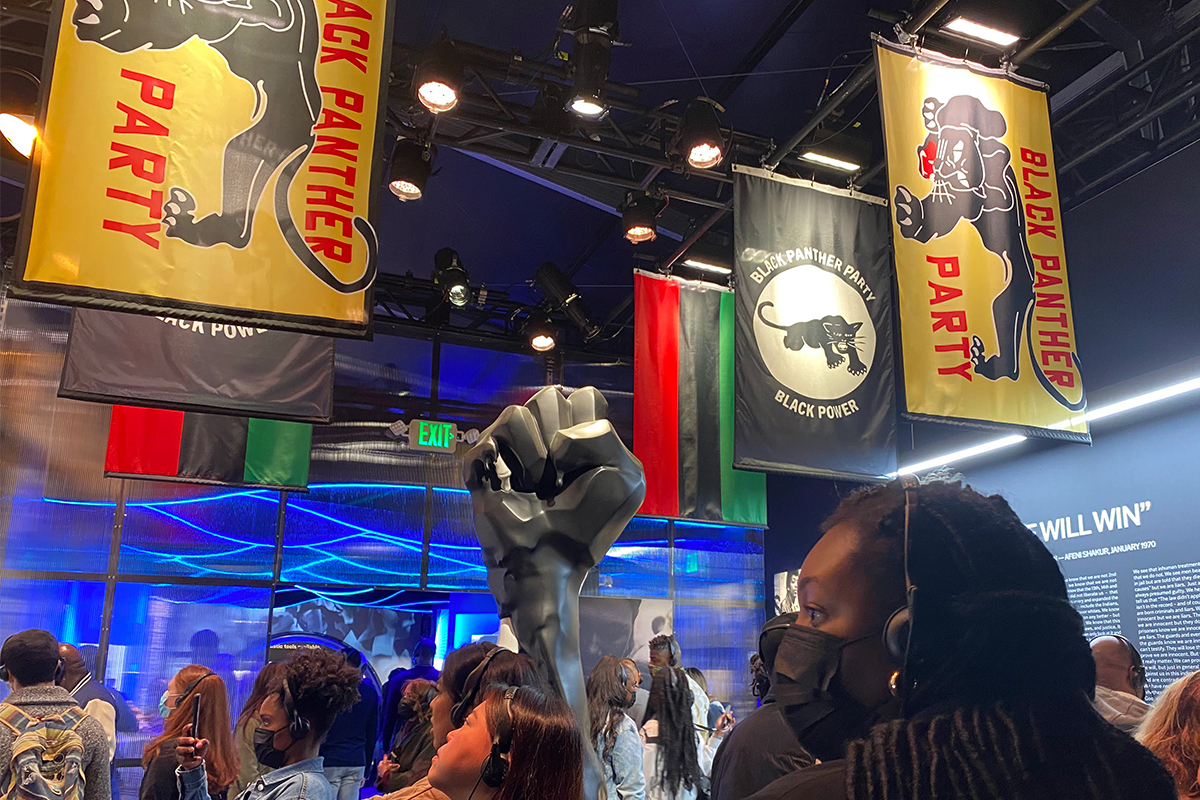Don’t play ya’self. Be sure you add the Tupac museum to your travel plans if you’re in Los Angeles.
Wake Me When I’m Free is a deep dive into activist, actor, poet, and artist Tupac Shakur’s life. We’ve visited unique museums all across the country, and this one is hands-down one of our favorites. We’ve gotta give thanks to the Shakur Estate and everyone involved in transforming the 20,000 square-foot space to celebrate Pac’s legacy and invaluable contributions to the culture..
Here are some of our favorite highlights of the museum:
How it all begins
The entrance is heaven. That’s how Creative Director Jeremy Hodges designed it. Thirteen-foot sculptures of Tupac’s tattoos sit on each wall as soon as you walk in. Everything from the floor, ceiling, walls and art installations are all white, except for the words of an untitled poem from Pac (where the museum’s title comes from).
The first part of the museum shows Tupac’s foundation: his mother and the Black Panthers.
As we enter the doors, we hear trees blowing in the wind along with an instrumental of “Blood On The Leaves” and Tupac’s iconic voice. A video fades in showing the injustices the Black community has faced over the years.
One of our favorite stories through the museum is uncovered in the first exhibit:
Afeni Shakur was on trial facing 300-years while she was defending herself and pregnant with Tupac. She was acquitted in May 1971, and Lesane Parish Crooks–renamed Tupac Amaru Shakur–was born the very next month.
This part of the exhibit also included handwritten notes from Afeni to her son that give a first-hand glimpse into the makings of his childhood: “Please find meaning in the responsibility of cleaning. This room is a pig sty. I will not accept it!”
Poetry and writings
We have seen many Gemini poets-turned-rappers from Kanye West to Kendrick Lamar. You can add Tupac to that list.
The museum features poetry books that are filled with haikus, writings, and drawings that Tupac composed as early as 11 years old. Composition book after composition book was filled with personal writings and doodle art. It felt like we were right there with him as he created stories that jumped off the page.
Tupac was a writer before anything else. He would write down his personal thoughts, business plans, letters to his friends, and more. He carried journals and notebooks around with him everywhere he went. The exhibit puts a ton of them on display from his personal collection.
Screenplays and movies
Before we saw him in Poetic Justice and Above The Rim (did y’all know he was supposed to be in Menace II Society?), Tupac kicked off his acting career in the theater in Harlem, New York. He was cast in his first ensemble production at 12 years old with Ernie McClintock. Along with info about his debut, you’ll catch playbills from his performances in A Raisin In The Sun and April 5th, as well as some of his original screenplays throughout the museum.
Tupac’s passion and talent were admired by many, including the late John Singleton (who appears in a clip from a past video interview) talking about how he was “wow’d” by Pac’s ability. Singleton even wrote the film Baby Boy hoping Tupac would lead, but he passed away before the film could be made. As you walk through this section, you will catch clips of his movies like Poetic Justice and Juice and more interviews of his co-creators’ praise.
Jail time
Tupac’s time in prison was one of reflection and discipline. He received letters from fans, actors like Tony Danza, and fellow musical legends like Quincy Jones (including a copy of Iceberg Slim’s Pimp).
Handwritten song lyrics and set lists written on the back of envelopes are displayed behind bars in this gallery. We also see receipts for drawings purchased from the commissary and even a workout routine he followed.
The design of this part of the museum is so intentional. As we leave this section about his incarceration, we flow right into the studio. Our movement through the exhibit mirrors Pac’s life. When he left jail he got back to work on his music. And shortly after he was released from prison, Pac signed with Death Row Records.
Music + Impact
One thing we didn’t mention: there’s a fire soundtrack that breathes life into the whole museum experience.
As you walk through each exhibit, QR codes are strategically placed about to give you a song for that time in his life, an excerpt from a lecture, or a clip from an interview with or about Pac.
This museum wonderfully celebrated his 75 million records sold, as well as gave honor to his unpublished work. Hand-written album tracklists and lyrics for classics like “Dear Mama” and “Brenda’s Got A Baby” line much of the 10-foot tall walls and show how detailed he was about his art.
We noticed he included numbers in the side margins to count the bars for each verse. Jess is the better rapper out of us two, but I quickly realized I can learn some things hanging around here.

